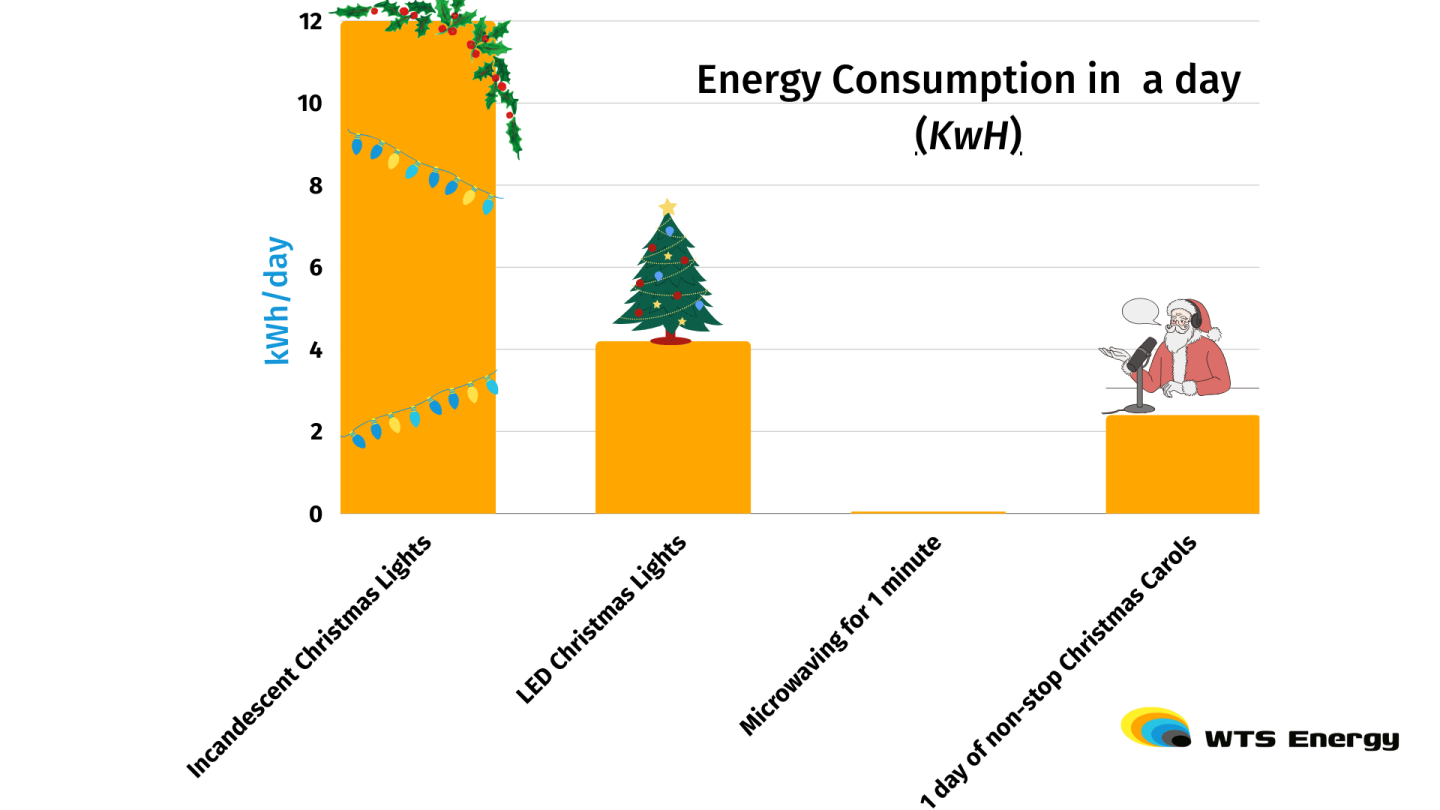As the holiday season sparkles with lights, music, and festive cheer, it’s a perfect time to ponder a question that’s both fun and enlightening: Which one of the following Holiday Energy Habits consumes the most energy and would instantly put you on Santa’s naughty list?
Homes and streets are indeed adorned with festive decorations, from twinkling lights to the soothing sound of Christmas carols. While these traditions clearly add to the holiday spirit, and they bring joy to hundreds of millions of people every year, have you ever wondered which of these consumes the most energy?

Without further ado, which one of the following uses more energy?
- Running 1000 incandescent Christmas lights for a day?
- Running 2500 LED lights for a day?
- Listening to 24 hours of Christmas Carols on the Radio?
- Or is it microwaving a glass of milk for one minute?
Bring out your Holiday Energy
We all have different Holiday Energy Habits. There are as many ways to celebrate the holidays as there are LED lights in a huge Christmas tree. In the end, the Holidays are an essential part of the year, and the joy and relaxation that they provide is paramount to many who count on this period to recharge their batteries and start the new year strong.
Unwrapping Holiday Energy Myths: The Real Power Guzzlers

A fascinating look into the energy usage of various holiday traditions reveals some surprising facts. Consider the classic battle between LED and incandescent lights, or the unassuming act of microwaving Santa’s milk. How do these stack up against keeping the radio tuned to Christmas carols all day and night?
Our analysis focused on four common traditions: using 1,000 incandescent Christmas lights, lighting up 2,500 LED Christmas lights, microwaving Santa’s milk for a minute, and playing Christmas carols on the radio non-stop. The energy consumption was calculated over a 24-hour period.
The results were intriguing. The 1,000 incandescent lights emerged as the largest energy consumer at a whopping 12,000 watt-hours. In contrast, their efficient counterparts, the 2,500 LED lights, used significantly less energy, amounting to only 4,200 watt-hours. The radio, playing carols constantly, consumed 2,400 watt-hours, while microwaving Santa’s milk for a minute was the least energy-intensive, using just 17 watt-hours.

A deeper insight
If you were surprised by these results, that’s okay, you are certainly not alone. Many people do not spend time out of their day to calculate the consumption of energy for appliances. That being said, this exercise isn’t just about numbers; it’s a lesson in energy efficiency. Incandescent lights, although traditional, are energy hogs compared to LEDs. In spite of being 2.5 as numerous, the LED lights consumed less than half the energy of what Incandescent lights needed. This stark difference highlights the importance of choosing energy-efficient options, not just during the holidays but throughout the year.
Tips for an Energy-Efficient Holiday
Switch to LED Lights: They are not only more energy-efficient but also last longer than traditional incandescent lights.
Limit Lighting Time: Use timers to ensure lights are on only during key hours.
Embrace nature: Far more beautiful than any LED lights, nature can offer you natural decorations which far outshine anything that uses energy.
Conclusion: Know your Energy
As a global staffing company, we know how much effort goes into making sure all Christmas trees are powered and all homes are warm during Christmas. Energy professionals around the world work hard, away from their families during the Holidays. They do it under harsh weather and conditions, sometimes offshore, sometimes onshore, in order for us to enjoy what many take for granted.
And so this holiday, please think twice about your Holiday Energy Habits. Not only will they cost you more, but it will also save effort for those who chose to work during the Holiday period.
Are you one of those talented energy professionals perhaps looking for their next place to spend their Christmas? Or would you rather prefer working during the year? Make sure you visit wtsenergy.com/jobs in order to view all our available positions for energy professionals.



